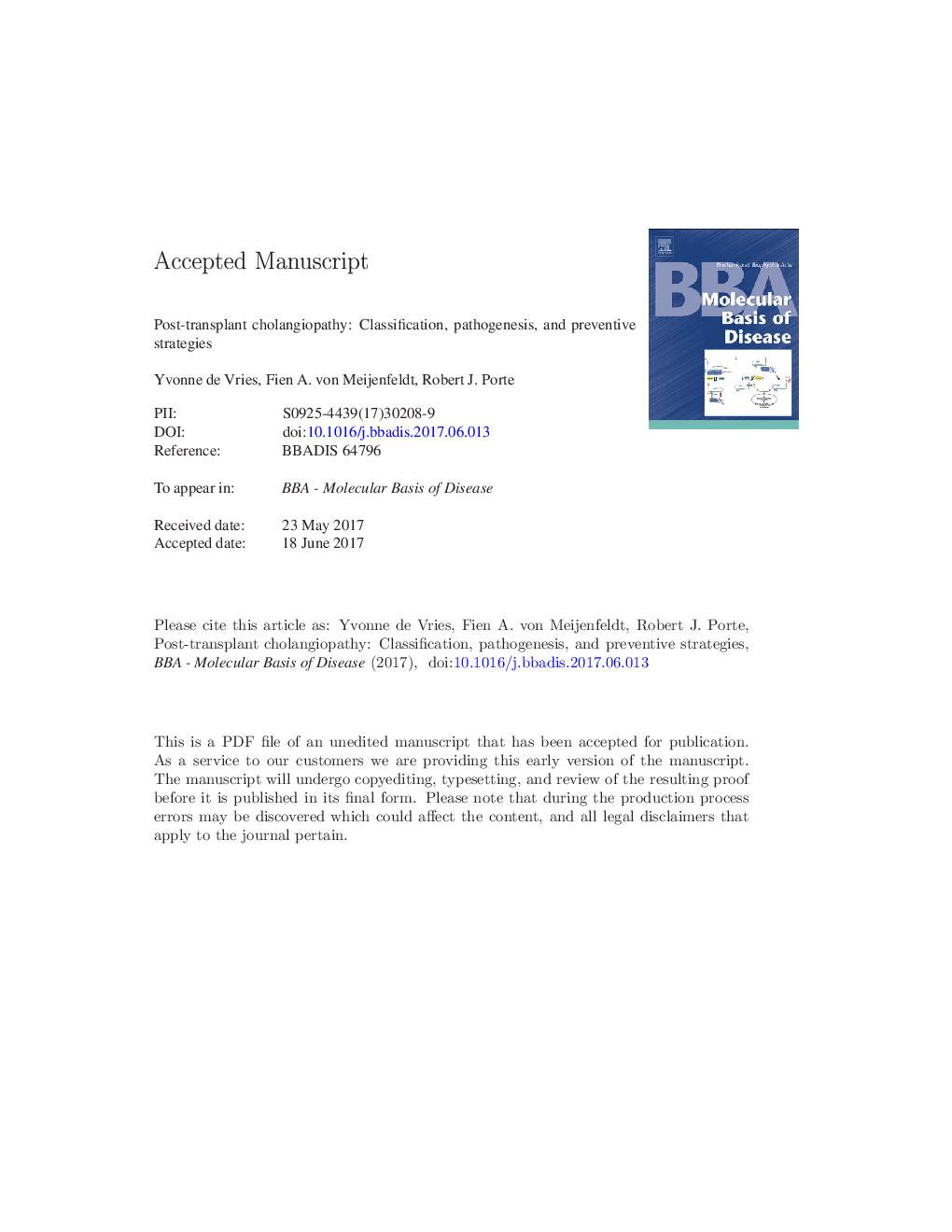| Article ID | Journal | Published Year | Pages | File Type |
|---|---|---|---|---|
| 8258546 | Biochimica et Biophysica Acta (BBA) - Molecular Basis of Disease | 2018 | 46 Pages |
Abstract
Biliary complications are the most frequent cause of morbidity, re-transplantation, and even mortality after liver transplantation. In general, biliary leakage and anastomotic and non-anastomotic biliary strictures (NAS) can be recognized. There is no consensus on the exact definition of NAS and different names and criteria have been used in literature. We propose to use the term post-transplant cholangiopathy for the spectrum of abnormalities of large donor bile ducts, that includes NAS, but also intraductal casts and intrahepatic biloma formation, in the presence of a patent hepatic artery. Combinations of these manifestations of cholangiopathy are not infrequently found in the same liver and ischemia-reperfusion injury is generally considered the common underlying mechanism. Other factors that contribute to post-transplant cholangiopathy are biliary injury due to bile salt toxicity and immune-mediated injury. This review provides an overview of the various types of post-transplant cholangiopathy, the presumed pathogenesis, clinical implications, and preventive strategies.
Keywords
PVPPBGBSEPMDR3peribiliary glandNon-anastomotic biliary stricturesischemic-type biliary lesionsDCDCFTRCITAE2NASperibiliary vascular plexusDBDAdenosine TriphosphateATPIschemia-reperfusion injuryDonation after Circulatory Deathdonation after brain deathcystic fibrosis transmembrane conductance regulatorcold ischemia timecytomegalovirusCMVMultidrug resistance protein 3Bile salt export pumpLiver transplantationERCP یا endoscopic retrograde cholangiopancreatography
Related Topics
Life Sciences
Biochemistry, Genetics and Molecular Biology
Ageing
Authors
Yvonne de Vries, Fien A. von Meijenfeldt, Robert J. Porte,
